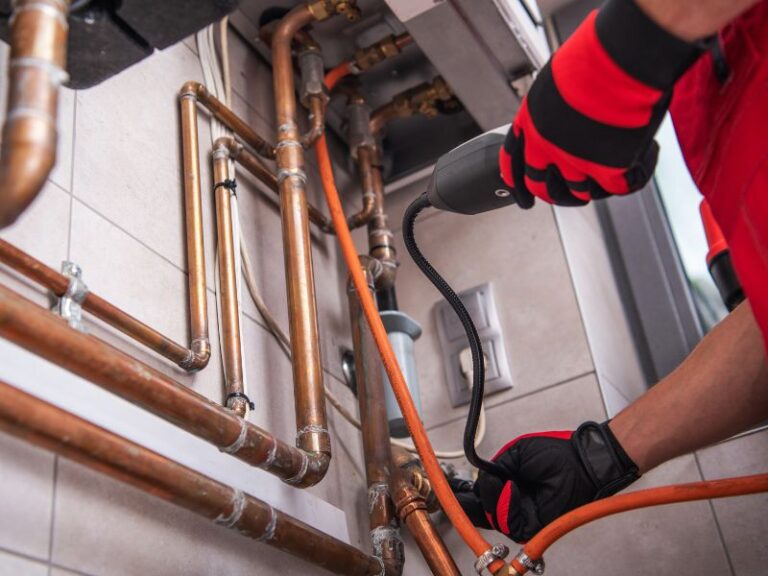The Basics of Heat Transfer in HVAC Systems: A Simple Guide
In any HVAC (Heating, Ventilation, and Air Conditioning) system, heat transfer is a critical concept that dictates how efficiently the system maintains the desired temperature and air quality. Heat transfer refers to how heat moves from one area to another. An HVAC system that effectively manages heat transfer will run more efficiently, maintain a comfortable indoor environment, and reduce energy costs.
In this simple guide, we’ll walk you through the basics of heat transfer in HVAC systems, explaining how heat moves and how HVAC systems control this process to optimize performance and energy consumption.
What Is Heat Transfer?
At its core, heat transfer is the movement of heat from a warmer area to a cooler one. In an HVAC system, heat transfer is essential for maintaining comfortable indoor temperatures, whether it’s heating a building in the winter or cooling it in the summer. There are three main modes of heat transfer in HVAC systems:
- Conduction
- Convection
- Radiation
Each of these methods plays a key role in how your HVAC system manages heat within a building.
1. Conduction: Heat Transfer Through Solids
Conduction is the process by which heat moves through solid materials. When one part of a material is heated, the heat moves through the material to cooler areas. This is why metal feels hot when one part of it is heated—heat travels through the metal.
Role in HVAC:
In HVAC systems, conduction is responsible for heat movement through building materials. For example:
- In heating systems, radiators transfer heat to the air by conduction. The warm surface of the radiator heats the surrounding air, which then circulates throughout the room.
- In cooling systems, heat is transferred through refrigerant lines. In air conditioning systems, heat moves from the indoor air to the refrigerant, which then carries it outside, where it is released into the air.
Why It Matters:
Insulating your building can significantly reduce unwanted heat gain or loss due to conduction. Good insulation reduces the amount of heat transferred through walls, ceilings, and floors, helping maintain the desired indoor temperature.
2. Convection: Heat Transfer Through Fluids (Air or Water)
Convection occurs when heat is transferred through a fluid (like air or water). In convection, the heated fluid expands, becomes less dense, and rises, while cooler fluid sinks, creating a circulation pattern. This movement helps distribute heat within a space.
Role in HVAC:
Convection is a fundamental part of how HVAC systems heat or cool air in a building:
- In heating systems, forced air systems distribute warm air through the ducts and vents. The furnace heats the air, and a fan blows the air into different rooms.
- In air conditioning systems, cold air is blown into rooms, where it absorbs heat and then circulates back to the air handler for re-cooling.
Why It Matters:
To optimize convection, it’s important to maintain good airflow within a building. Ducts, fans, and vent designs must be properly sized to allow air to circulate efficiently, ensuring consistent temperature control throughout the space.
3. Radiation: Heat Transfer Without Direct Contact
Radiation is the transfer of heat through electromagnetic waves, such as infrared radiation. Unlike conduction and convection, radiation doesn’t need a medium (like air or a solid material) to transfer heat. It can travel through a vacuum, which is why the Sun’s heat can reach the Earth despite the lack of air or matter in space.
Role in HVAC:
In HVAC systems, radiant heat is often used for direct heat transfer. For example:
- Radiant heating systems use infrared radiation to heat objects and people directly in a room. This is often seen in radiant floor heating, where pipes or cables embedded in the floor emit heat that radiates upwards into the room.
- Air conditioners also deal with radiant heat from external sources, like sunlight, which can heat windows and walls. HVAC systems must manage this heat to maintain an optimal indoor temperature.
Why It Matters:
Effective control of radiant heat helps reduce cooling costs. For instance, solar films or reflective window coatings can minimize radiant heat gain through windows, reducing the load on the air conditioning system.
How Heat Transfer Affects HVAC Efficiency
The efficiency of your HVAC system is heavily dependent on how well it can manage the three types of heat transfer—conduction, convection, and radiation. Poor heat transfer control results in wasted energy, higher costs, and discomfort. Here’s how optimizing heat transfer improves HVAC system efficiency:
1. Conduction Efficiency
Good insulation minimizes the amount of heat transferred through walls, ceilings, and floors, reducing the load on both heating and cooling systems. Ensuring your building has proper insulation and energy-efficient windows can significantly improve system efficiency.
2. Convection Efficiency
To improve convection, make sure the HVAC system provides adequate airflow. This means ensuring well-maintained ductwork, the proper vent placement, and efficient filters. Good airflow allows the HVAC system to move heat effectively, providing even temperatures throughout the building.
3. Radiation Efficiency
In hot climates, radiant heat from the sun can increase the cooling load on your system. Solar shading devices like blinds, curtains, or reflective window coatings can help limit radiant heat gain, reducing the burden on the air conditioning system.
Best Practices for Improving Heat Transfer Efficiency in HVAC Systems
To optimize heat transfer and HVAC efficiency, consider the following best practices:
1. Insulate and Seal Your Building
Proper insulation reduces heat loss in winter and heat gain in summer. Additionally, sealing gaps around doors, windows, and ducts prevents air leaks, improving overall system performance.
2. Use High-Performance Air Filters
Regularly replacing or cleaning air filters improves airflow efficiency, ensuring that the HVAC system doesn’t have to work harder to move air through the ducts. Clean filters also help maintain indoor air quality.
3. Upgrade to a More Efficient HVAC System
Older HVAC systems may not transfer heat as efficiently as newer, more energy-efficient models. Consider upgrading to systems with variable-speed fans and high SEER ratings, which offer better heat transfer control.
4. Regular Maintenance
Ensure the HVAC system’s components, such as coils, motors, and refrigerant levels, are regularly maintained to prevent inefficiencies in heat transfer. Proper maintenance helps the system perform optimally, reducing energy waste.
How CoolCalc Helps Optimize HVAC Efficiency
One of the first steps in optimizing HVAC efficiency is ensuring the system is properly sized. CoolCalc can help with cooling load calculations, which are essential to ensure that HVAC systems are neither over-sized nor under-sized. With the right size, heat transfer is more efficient, reducing unnecessary energy consumption.
- Accurate Sizing: By providing precise calculations, CoolCalc ensures that the system works efficiently without wasting energy.
- Energy Efficiency: Properly sized systems reduce strain and improve overall energy efficiency, which helps lower utility bills and extend the system’s lifespan.
Conclusion
Understanding heat transfer is essential for improving HVAC system efficiency. By optimizing the management of conduction, convection, and radiation, you can improve comfort, reduce energy costs, and extend the life of your HVAC system. Regular maintenance and proper system sizing are key to ensuring your HVAC system is working as efficiently as possible.
With the help of tools like CoolCalc, HVAC systems can be properly sized, improving efficiency and making heat transfer management more effective. Remember, a well-maintained HVAC system that properly manages heat transfer will deliver consistent comfort, reduce energy consumption, and lower operating costs for years to come.




